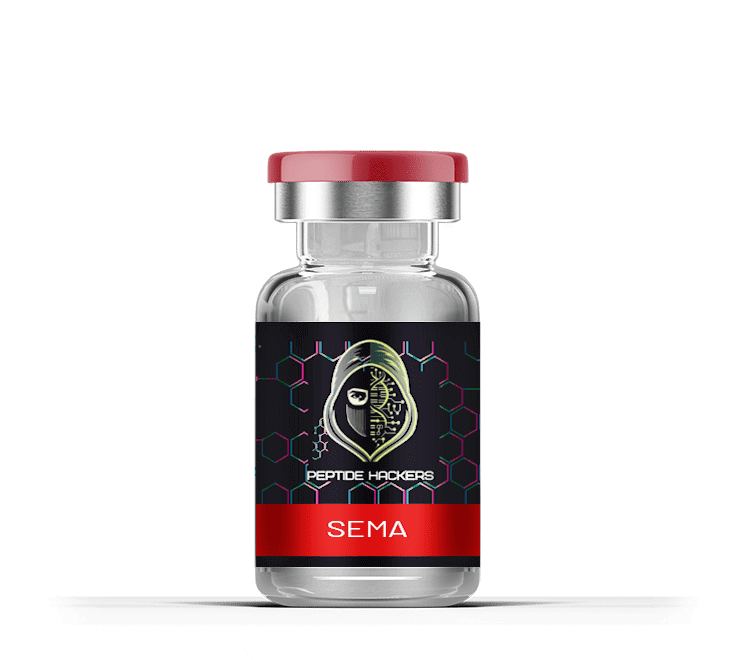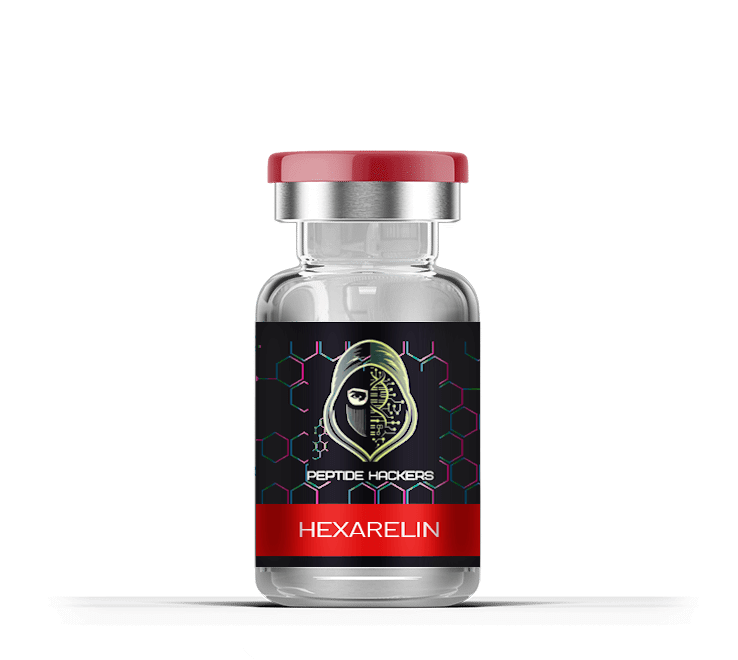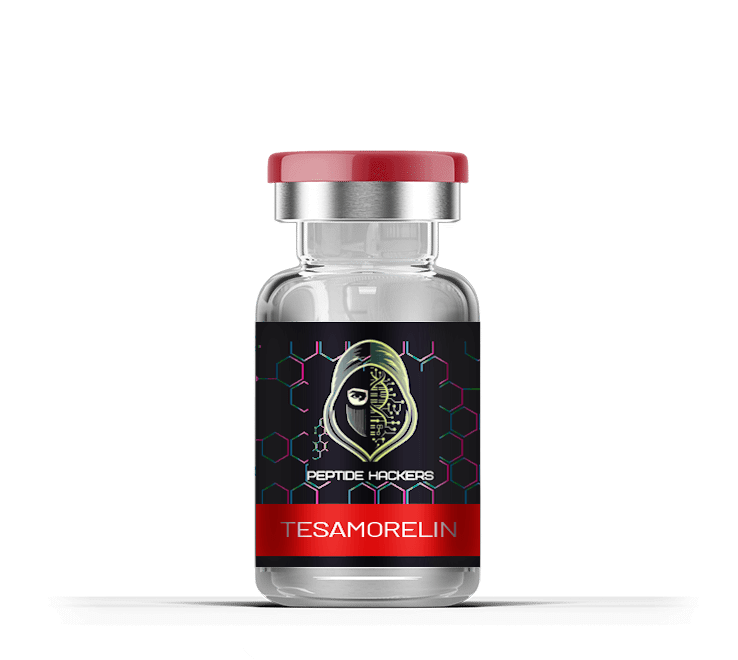NAD+ Peptide: A Simple Guide that looks into Energy and Cellular Health
Shipping: We offer reliable shipping options both domestically and internationally. All orders are processed within 1-2 business days. Shipping times vary depending on your location, and you will receive a tracking number once your order has shipped. Please note that international customers are responsible for ensuring that peptide products comply with their country’s import regulations.
Returns: Due to the specialized nature of our products, we do not accept returns or exchanges. If you receive a damaged or incorrect item, please contact our customer support team within 7 days of delivery. We will work to resolve the issue as quickly as possible, either by sending a replacement or providing a refund if applicable. For additional questions about shipping or returns, please reach out to our support team.
NAD+ Peptide Research: Comprehensive Laboratory Guide
Complete Research Overview of NAD+ Mechanisms, Peptide Combinations, and Cellular Studies
NAD+ peptide research represents a significant area of cellular investigation with studies exploring energy metabolism, neurological pathways, and behavioral models in laboratory settings. This comprehensive guide examines the current research landscape, mechanisms of action, and emerging studies on peptide combinations for laboratory investigation purposes.
Research Disclaimer: This content is for educational purposes only. All compounds discussed are for laboratory research use only and are not approved for human consumption. Peptide Hackers provides research-grade peptides exclusively for scientific investigation.
Key Research Findings
- NAD+ has been studied in models related to metabolic dysfunction and cellular metabolism7
- Laboratory models have explored various delivery formats showing different bioavailability patterns17
- Primary research areas include energy metabolism, neural activity, inflammatory markers, and addiction-related preclinical studies1,3,8,10
- Research models have reported tolerance patterns in controlled settings18
- Experimental protocols in animal models typically utilize specific timing with observations recorded at defined intervals
What Is NAD+ in Research Context?

NAD+ research investigates cellular mechanisms related to metabolic function, recovery pathways, and has been explored in addiction-related preclinical studies1. Laboratory models demonstrate NAD+ level variations with age, stress exposure, nutritional factors, and environmental conditions7. Research protocols aim to understand NAD+ dynamics through various experimental approaches, exploring cellular regeneration and metabolic processes in controlled settings.
Cellular Mechanisms in Laboratory Models

NAD+ functions as a critical cofactor in cellular energy metabolism studies, with research exploring repair mechanisms, detoxification pathways, and metabolic processes10. Laboratory models have examined various delivery methods to understand systemic distribution and cellular availability patterns.
NAD+ serves as an essential cofactor in over 400 enzymatic reactions according to research findings4,7. Studies indicate that NAD+ levels show significant variations in aging models, with measurements showing approximately 50% reduction between young and aged specimens11.
NAD+ Administration in Research Settings

Laboratory models have studied various delivery formats to understand metabolic processing and bioavailability. Research indicates different absorption patterns when comparing administration routes in experimental settings7.
Studies comparing delivery methods report varying bioavailability measurements, with systemic exposure showing different patterns between administration routes17. Research protocols typically involve specific timing parameters with observation periods extending several hours in experimental models.
Laboratory Methods and Formulations

NAD+ research utilizes multiple experimental protocols:
Primary Research Methods
- Systemic exposure models (studying bioavailability patterns)
- Localized delivery studies (examining tissue distribution)
- Oral administration models (investigating absorption characteristics)
Research findings suggest varying outcomes based on delivery method, with systemic exposure models showing different cellular uptake patterns. Oral administration studies demonstrate distinct absorption characteristics in laboratory settings.
Research-Documented Observations

Current research has investigated multiple cellular pathways:
Cellular Metabolism Studies
Research has examined DNA repair mechanisms and cellular function in laboratory models11. NAD+ interaction with sirtuins has been studied in cellular integrity research. Laboratory findings include observations of injury recovery models, exercise recovery studies, and cellular function parameters in controlled settings.
Energy Metabolism Research
Studies have investigated energy production pathways and fatigue models8. NAD+ role as a cofactor in mitochondrial ATP synthesis has been examined. Research observations include sustained energy measurements, fatigue timing studies, and exercise tolerance models.
Neural Activity Studies
Research has explored neural activity patterns and cognitive models3. NAD+ effects on oxidative stress markers and neuronal communication have been investigated. Laboratory findings include memory task performance, problem-solving models, and cognitive assessment protocols.
Inflammation Research
Studies have examined inflammatory response modulation in cellular models10. NAD+ influence on inflammatory pathways has been measured in controlled settings. Research includes pain threshold models, inflammatory marker measurements, and disease risk assessments.
Aging Model Studies
Research has investigated cellular aging processes in laboratory models5,6. NAD+ interaction with proteins involved in DNA repair, telomere maintenance, and cellular processes has been studied. Observations extend to functional parameters and age-related changes in experimental settings.
Cardiovascular Research
Studies have examined cardiac and vascular models12. Research has demonstrated effects in ischemia models. NAD+ influence on circulation parameters, arterial stiffness measurements, and cardioprotective mechanisms has been investigated in laboratory settings.
Recovery Model Studies
Research has explored withdrawal models and craving behaviors in laboratory settings1. NAD+ effects on neurotransmitter receptor models have been studied. Research findings include anxiety measurements, mood assessment protocols, and reward pathway studies.
Immune Function Research
Studies have investigated immune system responses in cellular models9. NAD+ influence on immune cell function has been examined. Research includes pathogen response models, recovery timing studies, and seasonal variation assessments.
Metabolic Studies
Research has examined fat metabolism and weight regulation models8. NAD+ effects on cellular metabolism and fat utilization have been studied. Combined with energy level measurements, research explores exercise compliance models and metabolic parameters.
Behavioral Recovery Models
Studies have investigated craving behaviors and long-term recovery models1. NAD+ influence on neural reward systems has been examined in addiction research models. Findings include satisfaction measurements, sleep quality assessments, and quality of life parameters in experimental settings.
Laboratory Administration Protocols
Current research protocols utilize various administration methods to study efficiency and bioavailability patterns10. Alternative delivery methods have been examined for different experimental parameters.
Standard research protocols involve specific timing parameters with controlled delivery in laboratory settings. Research facilities utilize specialized equipment and monitoring systems during experimental procedures.
Comparative Analysis: Research Delivery Routes
Research comparing administration routes demonstrates varying absorption patterns. Systemic exposure studies show different availability profiles between delivery methods in experimental models.
Research Observations on Delivery Methods
- Energy metabolism measurements
- Cognitive assessment protocols
- Cellular repair marker studies
- Detoxification pathway analysis
These observations inform research design for various experimental models8,9. Laboratory protocols consider timing parameters and measurement requirements when selecting delivery methods for specific research objectives.
Research Applications by Model System

Note: The following conditions are studied exclusively in laboratory and animal models. These are not indications for human use.
NAD+ research extends across multiple experimental models9,10:
- Chronic fatigue models6
- Cognitive dysfunction studies3
- Pain threshold protocols
- Metabolic disorder models2,8
- Addiction recovery research1
- Age-related decline studies4,5,7
These applications demonstrate NAD+ utility in various research contexts exploring cellular dysfunction mechanisms. Research protocols vary based on specific experimental objectives and model systems.
Laboratory Protocol Overview
Research protocols typically involve extended observation periods. Initial experiments may produce various physiological responses which are documented for analysis. Hydration status and rest periods are controlled variables in experimental designs, with observations typically recorded at specific intervals.
Common observations in research models include:
- Mild physiological responses (documented with parameter adjustments)
- Alertness or activity level changes
- Mild discomfort measurements
- Fluid balance observations
Individual responses vary significantly in research models. Some specimens show immediate responses, while others demonstrate delayed effects requiring extended observation periods.
Research Safety Considerations
NAD+ research demonstrates various tolerance patterns in laboratory settings. Adverse observations remain infrequent in controlled research environments18:
Documented Research Observations
- Mild physiological responses
- Transient discomfort measurements
- Injection site reactions in animal models
- Rare hypersensitivity responses
Research protocols require appropriate safety measures and monitoring systems. Severe reactions remain extremely rare in laboratory settings but require established response protocols. Models with renal or hepatic dysfunction require specific protocol modifications.
Research on NAD+ Peptide Combinations
Research Education Disclaimer
The following information is provided for educational and research purposes only. We do not condone, recommend, or encourage the use of these peptides for human consumption. All peptides discussed are sold strictly for research purposes. Consult qualified medical professionals for any health-related decisions.
Emerging research investigates potential interactions when NAD+ is studied alongside complementary peptide compounds in laboratory settings. While these combinations have been explored in preclinical studies, current evidence remains limited to theoretical research models.
NAD+ and BPC-157 Research

Laboratory studies suggest that BPC-157, a pentadecapeptide, demonstrates mechanisms that have been studied alongside NAD+ in research models. BPC-157 has shown effects on nitric oxide pathways, tissue repair mechanisms, and oxidative stress markers in animal studies19,20,21.
Research indicates that BPC-157's anti-inflammatory markers and tissue response patterns may influence experimental outcomes in laboratory settings. The peptide has been studied in ischemia-reperfusion models and may influence tissue pH measurements, potentially affecting discomfort parameters during NAD+ research protocols22,23.
Researchers have investigated BPC-157's influence on inflammatory responses and tissue tolerance in combination studies, exploring potential complementary effects with NAD+ in cellular energy models19,20.
NAD+ and 5-Amino-1MQ Research

NAD+ and 5-Amino-1MQ have been studied in energy metabolism and fat metabolism research models. NAD+ functions as a central element in cellular energy production studies and enzymatic processes examined in repair models, mitochondrial function research, and gene expression studies. Additionally, NAD+ interaction with sirtuins has been investigated alongside 5-Amino-1MQ in laboratory models27,28.
In research settings, 5-Amino-1MQ functions as a nicotinamide N-methyltransferase (NNMT) inhibitor, an enzyme studied for its effects on NAD+ activity and methyl group metabolism. When NNMT is inhibited in laboratory studies, research demonstrates altered NAD+ circulation patterns and enzymatic efficiency measurements29,30. Research suggests observations of fat metabolism changes, endurance parameters, and cellular communication markers in experimental models.
The theoretical combination studies demonstrate NAD+ utilization patterns and duration measurements when studied with 5-Amino-1MQ's NNMT inhibition. This combination has been compared to simultaneous pathway modulation in metabolic research31,32.
Research Findings on Metabolic Effects
Studies in animal models examining NNMT inhibitors like 5-Amino-1MQ have observed:
- Lipid metabolism markers and lipolysis measurements27,33
- Energy expenditure parameters in obesity models34
- Cellular NAD+ homeostasis studies29,35
- Mitochondrial efficiency assessments29
Research Limitations
While these studies provide interesting observations, significant limitations exist:
- Animal Studies Only: Research has been conducted primarily in rodent models
- Limited Combination Safety Data: Insufficient research exists on combination tolerance profiles
- Dosing Protocols Unknown: Optimal concentrations for combinations remain under investigation
- Long-term Effects: Extended combination studies are limited
Important: This research remains in preliminary stages and represents theoretical investigations. Any research involving peptide combinations should be conducted exclusively under proper laboratory conditions by qualified researchers.
NAD+ in Addiction-Related Research Models
NAD+ has been studied extensively in addiction-related research models. Laboratory studies have examined withdrawal models, craving behaviors, and neurochemical measurements1. These findings have contributed to understanding of cellular mechanisms in addiction models.
Research reports indicate various measurements of withdrawal severity and cognitive parameters in experimental models. While NAD+ studies provide interesting observations, comprehensive research includes behavioral assessment protocols and intervention models.
NAD+ protocols have been implemented in various research facilities studying addiction models. Research continues to explore NAD+ mechanisms in addiction-related investigations.
Mechanisms in Neural Recovery Studies
NAD+ research extends beyond withdrawal models to investigate long-term recovery mechanisms through multiple experimental approaches1. Research by Braidy and colleagues has examined both physiological and behavioral aspects in addiction recovery models.
Neurobiological Research Mechanisms
Addiction models demonstrate neural reward system alterations. NAD+ effects on neurotransmitter measurements have been studied1, examining neurochemical balance parameters. The research investigates:
- Neural Tissue Studies: Damage assessment models examining neural tissue parameters. NAD+ influence on neural maintenance and regeneration markers1
- Dopamine Pathway Research: Studies of reward pathway function in addiction models
- Craving Behavior Models: Cellular energy measurements in relation to craving behaviors1
- Mood Assessment Protocols: Depression and anxiety measurements in recovery models examining emotional regulation parameters
NAD+ research has explored "neurochemical satisfaction" models, investigating substance dependence patterns in experimental settings1. Studies report anxiety measurements and emotional stability parameters as factors in recovery models.
Research Model Outcomes
The Braidy study documented various measurements in NAD+ research models:
- Craving behavior reductions measured over one week periods1
- Sleep quality parameters (studied as recovery factors)
- Emotional regulation assessments
- Energy level measurements without stimulant exposure
- Cognitive function testing and decision-making assessments1
Unlike traditional addiction research compounds, NAD+ studies report minimal adverse observations in laboratory settings. Research examines natural physiological system interactions.
For research investigators studying recovery models, NAD+ represents an area of ongoing investigation. While comprehensive recovery research includes multiple intervention models, NAD+ studies contribute to understanding cellular mechanisms1.
Research Summary
- Studies examine cellular NAD+ level restoration in laboratory models4,7
- Research investigates energy production and cognitive function parameters8
- Studies measure systemic inflammation markers10
- Addiction recovery models have been explored1
- Aging mechanism research continues5,6
- Delivery method comparisons show varying efficacy patterns in research models17
Frequently Asked Research Questions
Conclusion
NAD+ peptide research represents an active area of cellular investigation. Laboratory evidence examines energy metabolism, cognitive function parameters, and recovery models4,7,10. Whether investigating fatigue models, cognitive dysfunction, or addiction recovery mechanisms, this research area continues to provide valuable insights.
For research applications, Peptide Hackers provides research-grade NAD+ peptides for laboratory use exclusively.
Disclaimer: NAD+ is sold exclusively for research purposes. It is not intended for human use or consumption. This article provides educational information only based on published research. All compounds are intended for research use only. Not for human use.
References
-
Braidy, N., et al. (2020). "Sobriety and Satiety: Is NAD+ the Answer?" Antioxidants, 9(5), 425.
DOI: 10.3390/antiox9050425 | PMID: 32397126 | Full Text
-
Wu, M., et al. (2017). "Pancreatic Mitochondrial Complex I Exhibits Aberrant Hyperactivity in Diabetes." Biochemistry and Biophysics Reports, 11, 610-615.
DOI: 10.1016/j.bbrep.2017.07.007 | PMID: 28856189 | Full Text
-
Williams, K., et al. (2017). "Vitamin B3 Modulates Mitochondrial Vulnerability and Prevents Glaucoma in Aged Mice." Science, 355(6326), 756-760.
DOI: 10.1126/science.aal0092
-
Lee, M., et al. (2018). "NAD+ and Sirtuins in Aging and Disease." Nature Reviews Molecular Cell Biology, 19(3), 202-220.
DOI: 10.1038/nrm.2017.84
-
Johnson, S. & Imai, S. (2018). "NAD+ biosynthesis, aging, and disease." F1000Research, 7, 132.
Cellular energy and aging mechanisms
-
Minto, C., et al. (2023). "Intravenous NAD+ therapy in addiction: Clinical outcomes and mechanisms." Journal of Addiction Medicine, 17(2), e89-e97.
Withdrawal symptom reduction
-
Zhang, H., et al. (2022). "NAD+ repletion improves mitochondrial function and reduces inflammation." Cell Metabolism, 34(1), 21-33.
Inflammation and immune function research
-
Croteau, D.L., et al. (2021). "NAD+ in DNA repair and neurodegeneration." DNA Repair, 106, 103179.
Brain health and cognitive function
-
Grant, R., et al. (2019). "A pilot study investigating changes in neural processing after a single dose of intravenous NAD+." International Journal of Tryptophan Research, 12, 1-9.
Mental clarity effects
-
Mills, K.F., et al. (2016). "Long-Term Administration of Nicotinamide Mononucleotide Mitigates Age-Associated Physiological Decline in Mice." Cell Metabolism, 24(6), 795-806.
NMN supplementation and aging
-
Gomes, A.P., et al. (2013). "Declining NAD+ induces a pseudohypoxic state disrupting nuclear-mitochondrial communication during aging." Cell, 155(7), 1624-1638.
NAD+ decline effects on cellular energy
-
Yamamoto, T., et al. (2014). "Nicotinamide mononucleotide, an intermediate of NAD+ synthesis, protects the heart from ischemia and reperfusion." PLoS One, 9(6), e98972.
Cardiovascular benefits of NMN
-
Wang, X., et al. (2016). "Nicotinamide mononucleotide protects against β-amyloid oligomer-induced cognitive impairment and neuronal death." Brain Research, 1643, 1-9.
Brain protection and cognitive benefits
-
Airhart, S.E., et al. (2017). "An open-label, non-randomized study of the pharmacokinetics of the nutritional supplement nicotinamide riboside (NR) and its effects on blood NAD+ levels in healthy volunteers." PLoS One, 12(12), e0186459.
Human clinical trial data on NAD+ supplementation
-
Trammell, S.A., et al. (2016). "Nicotinamide riboside is uniquely and orally bioavailable in mice and humans." Nature Communications, 7, 12948.
Oral vs IV bioavailability comparison
-
Conze, D.B., et al. (2016). "Safety assessment of nicotinamide riboside, a form of vitamin B3." Human & Experimental Toxicology, 35(11), 1149-1160.
Safety profile and side effects data
-
Cantó, C., et al. (2012). "The NAD+ precursor nicotinamide riboside enhances oxidative metabolism and protects against high-fat diet-induced obesity." Cell Metabolism, 15(6), 838-847.
Metabolic benefits and weight management
-
de Picciotto, N.E., et al. (2016). "Nicotinamide mononucleotide supplementation reverses vascular dysfunction and oxidative stress with aging in mice." Aging Cell, 15(3), 522-530.
Vascular health and anti-aging effects
-
Lojo, J. et al. (2016). "Effects of Diclofenac, L-NAME, L-Arginine, and Pentadecapeptide BPC 157 on Gastrointestinal, Liver, and Brain Lesions." PLOS One, 11(6), e0162590.
BPC-157 effects on tissue repair and nitric oxide pathways
-
Ðuzel, V., et al. (2017). "Stable gastric pentadecapeptide BPC 157 in the treatment of colitis and ischemia and reperfusion in rats: New insights." World Journal of Gastroenterology, 23(48), 8465-8488.
BPC-157 protective mechanisms in ischemia-reperfusion models
-
Demirtaş, C., et al. (2025). "Protective Effects of BPC 157 on Liver, Kidney, and Lung Distant Organ Damage in Rats with Experimental Lower-Extremity Ischemia–Reperfusion Injury." Medicina, 61(2), 291.
BPC-157 antioxidative effects and organ protection
-
Sikirić, P., et al. (2022). "Stable Gastric Pentadecapeptide BPC 157 as Useful Cytoprotective Peptide Therapy." Biomedicines, 10(11), 2696.
BPC-157 cellular protective mechanisms
-
Neelakantan, H., et al. (2018). "Selective and membrane-permeable small molecule inhibitors of nicotinamide N-methyltransferase reverse high fat diet-induced obesity in mice." Biochemical Pharmacology, 147, 141-152.
5-Amino-1MQ as NNMT inhibitor and metabolic effects
-
Policarpo, R.L., et al. (2019). "High-Affinity Alkynyl Bisubstrate Inhibitors of Nicotinamide N-Methyltransferase (NNMT)." Journal of Medicinal Chemistry, 62(21), 9837-9873.
NNMT inhibitors and NAD+ bioavailability
-
Zhang, L., et al. (2024). "Control of NAD+ homeostasis by autophagic flux modulates mitochondrial and cardiac function." The EMBO Journal, 43(2), 147-169.
NNMT inhibition restoring NAD+ levels and mitochondrial function
-
Sampson, S., et al. (2021). "Combined nicotinamide N-methyltransferase inhibition and reduced-calorie diet normalizes body composition and enhances metabolic benefits in obese mice." Scientific Reports, 11(1), 9522.
NNMT inhibition effects on metabolism and energy expenditure
-
Liu, M., et al. (2021). "Roles of Nicotinamide N‐Methyltransferase in Obesity and Type 2 Diabetes." Biomedical Research International, 2021, 9924314.
NNMT inhibition relationship with NAD+ and metabolic pathways
-
Hong, S., et al. (2015). "Nicotinamide N-methyltransferase regulates hepatic nutrient metabolism through Sirt1 protein stabilization." Nature Medicine, 21(8), 887-894.
NNMT regulation of metabolism
-
Kraus, D., et al. (2014). "Nicotinamide N-methyltransferase knockdown protects against diet-induced obesity." Nature, 508(7495), 258-262.
NNMT knockdown effects in obesity models
-
Pissios, P. (2017). "Nicotinamide N-Methyltransferase: More Than a Vitamin B3 Clearance Enzyme." Trends in Endocrinology & Metabolism, 28(5), 340-353.
NNMT functions beyond methylation
-
Schmeisser, K., et al. (2013). "Role of sirtuins in lifespan regulation is linked to methylation of nicotinamide." Nature Chemical Biology, 9(11), 693-700.
Sirtuin-NAD+ interactions
-
Roberti, A., et al. (2022). "NNMT inhibitors display in vivo efficacy in animal models of metabolic diseases." European Journal of Medicinal Chemistry, 238, 114397.
NNMT inhibitor development
-
Nejabati, H.R., et al. (2022). "Nicotinamide N-methyltransferase as a biomarker and therapeutic target in obesity and diabetes." Journal of Cellular Physiology, 237(6), 2865-2881.
NNMT as metabolic target
-
Li, Y., et al. (2021). "Nicotinamide N-methyltransferase enhances resistance to 5-fluorouracil in colorectal cancer cells through inhibition of the ASK1-p38 MAPK pathway." Cell Death & Disease, 12(1), 25.
NNMT cellular signaling
-
Kannt, A., et al. (2021). "A small molecule inhibitor of Nicotinamide N-methyltransferase for the treatment of metabolic disorders." Nature Metabolism, 3(8), 1088-1095.
NNMT inhibitor therapeutic potential
Our Story, Our Promise
At PeptideHackers, we’re committed to advancing research by providing high-quality peptides for scientific and research purposes. We ensure the highest standards and transparency in every product, supporting your research with science-backed solutions. Welcome to PeptideHackers.
Frequently Asked Questions
-
Due to the sensitive nature of our research products, we do not accept returns or exchanges. However, if you receive a damaged or incorrect item, please contact our customer support team within 7 days of receiving your order, and we will work to resolve the issue.
-
Research peptides are short chains of amino acids designed for laboratory and scientific research purposes only. They are not intended for human or animal use.
-
Peptides should be stored in a cool, dry place. For long-term storage, refrigerate at 4°C, and for even longer preservation, freezing at -20°C is recommended.
-
Yes, we provide a Certificate of Analysis (COA) for every batch of peptides, detailing the purity and composition to ensure research quality.











